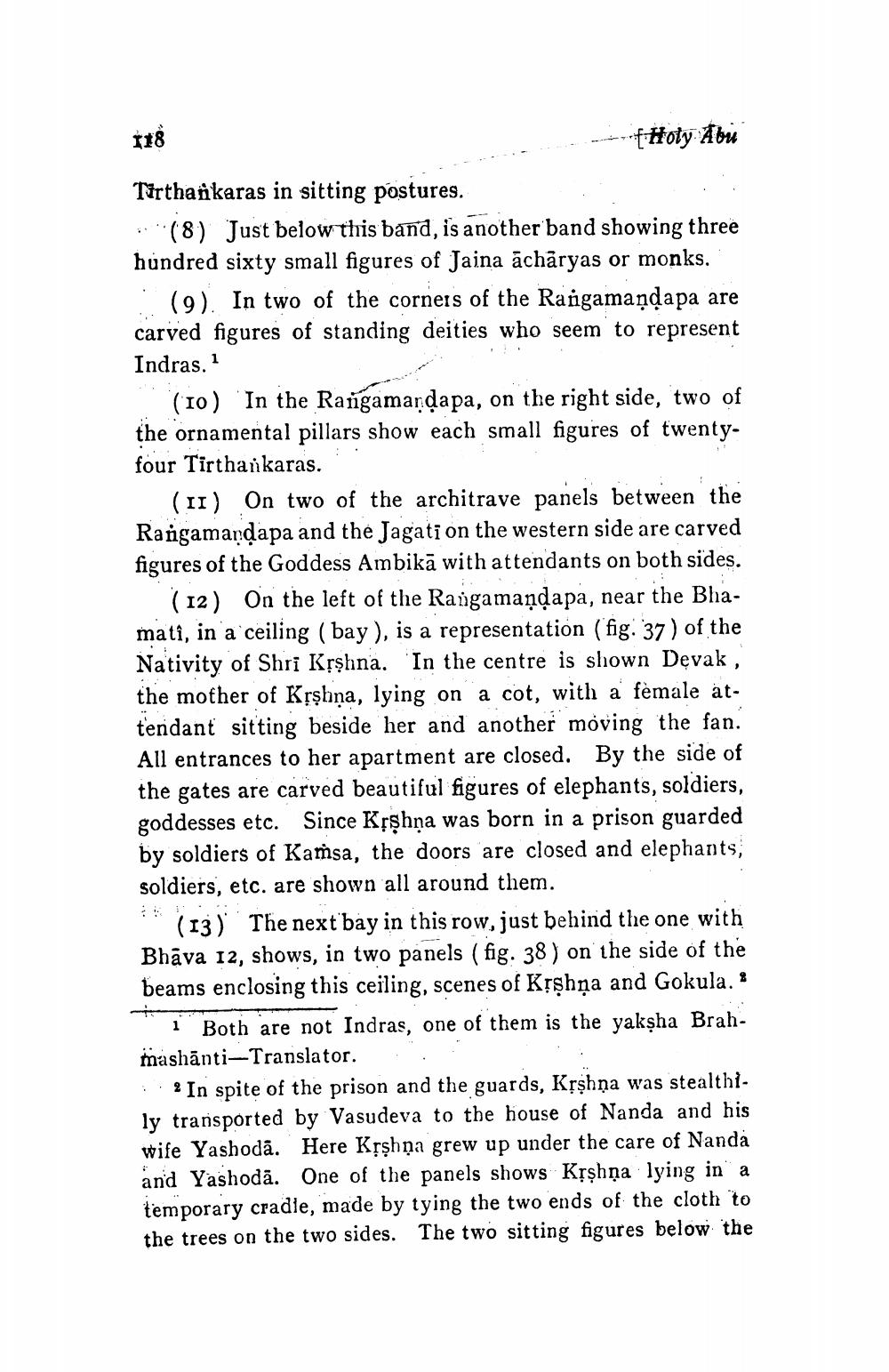________________
118
Holy Abu
Tirthankaras in sitting postures.
(8) Just below this band, is another band showing three hundred sixty small figures of Jaina acharyas or monks.
(9). In two of the corners of the Rangamaṇḍapa are carved figures of standing deities who seem to represent Indras. 1
(10) In the Rangamandapa, on the right side, two of the ornamental pillars show each small figures of twentyfour Tirthankaras.
(II) On two of the architrave panels between the Rangamandapa and the Jagati on the western side are carved figures of the Goddess Ambika with attendants on both sides.
(12) On the left of the Rangamandapa, near the Bhamati, in a ceiling (bay), is a representation (fig. 37) of the Nativity of Shri Krshna. In the centre is shown Devak, the mother of Krshna, lying on a cot, with a female attendant sitting beside her and another moving the fan. All entrances to her apartment are closed. By the side of the gates are carved beautiful figures of elephants, soldiers, goddesses etc. Since Krshna was born in a prison guarded by soldiers of Kamsa, the doors are closed and elephants; soldiers, etc. are shown all around them.
(13) The next bay in this row, just behind the one with Bhava 12, shows, in two panels (fig. 38) on the side of the beams enclosing this ceiling, scenes of Krshna and Gokula. "
1 Both are not Indras, one of them is the yaksha Brahmashanti-Translator.
2 In spite of the prison and the guards, Krshna was stealthily transported by Vasudeva to the house of Nanda and his wife Yashoda. Here Krshna grew up under the care of Nanda and Yashoda. One of the panels shows Kṛṣhna lying in a temporary cradle, made by tying the two ends of the cloth to the trees on the two sides. The two sitting figures below the




